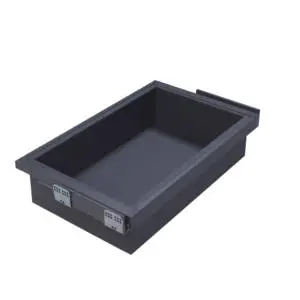Sheet Metal Welding Stamping/and Panel-Mounted Connectors Designing Sheet Metal Products Spare Parts
Sheet Metal Welding Stamping and Panel-Mounted Connectors: Designing Sheet Metal Products Spare Parts
Sheet metal products and their spare parts are the backbone of countless industries, from automotive and aerospace to electronics and manufacturing. Central to their functionality are two key processes—welding and stamping—and critical components like panel-mounted connectors. When designed with precision, these elements ensure that sheet metal parts are not only durable and reliable but also seamlessly integrated into larger systems. Whether crafting custom spare parts or full assemblies, the synergy of welding, stamping, and connector design is essential for delivering high-performance sheet metal solutions.
Sheet Metal Stamping: Shaping Precision
Sheet metal stamping is a cold-forming process that transforms flat metal sheets (such as steel, aluminum, or stainless steel) into complex, predefined shapes using dies and presses. This process is foundational for creating consistent, high-volume sheet metal parts with tight tolerances:
- Efficiency in Mass Production: Stamping excels at producing identical parts quickly, making it ideal for large-scale manufacturing of spare parts like brackets, clips, covers, and enclosures. The use of precision dies ensures that each part meets exact dimensions, reducing the need for post-processing.
- Versatility in Design: From simple flat components to intricate shapes with bends, embossments, or cutouts, stamping accommodates a wide range of designs. For example, stamped brackets for electrical panels can be engineered with specific holes and notches to fit panel-mounted connectors perfectly, ensuring a secure and aligned installation.
- Material Compatibility: Stamping works with various sheet metal materials, each chosen for its properties. Aluminum, valued for its lightweight nature, is often stamped for aerospace or automotive parts; stainless steel, with its corrosion resistance, is preferred for parts in harsh environments, such as industrial machinery enclosures.
- Cost-Effectiveness: Once dies are created, stamping minimizes material waste and labor costs, making it a budget-friendly option for producing spare parts in bulk. This efficiency is particularly valuable for industries requiring frequent replacement parts.
Sheet Metal Welding: Joining for Strength
Welding is the process of fusing two or more sheet metal components together, creating a strong, permanent bond. It is indispensable for assembling larger sheet metal products or repairing spare parts, ensuring structural integrity:
- Types of Welding for Sheet Metal:
- MIG Welding (Metal Inert Gas): Ideal for welding thin sheet metals like aluminum or mild steel, MIG welding uses a wire electrode and inert gas to create clean, strong welds. It is commonly used in automotive body panels or electronic enclosures.
- TIG Welding (Tungsten Inert Gas): Offers precise control, making it suitable for stainless steel or high-strength alloys. TIG welding is preferred for parts requiring aesthetically pleasing welds, such as visible brackets or aerospace components.
- Spot Welding: Uses heat and pressure to join overlapping sheets at specific points, perfect for assembling components like metal frames or enclosures where full-length welds are unnecessary.
- Strength and Durability: Welded joints distribute stress evenly across the connected parts, ensuring they can withstand heavy loads, vibrations, and environmental stressors. This is critical for spare parts like support frames or machinery mounts, which must maintain stability under operation.
- Design Considerations: Welding requires careful design to avoid warping or weakening the metal. For example, when welding stamped parts to form an enclosure, engineers must account for heat-affected zones and ensure that the welds do not interfere with the fit of panel-mounted connectors or other components.
Panel-Mounted Connectors: Bridging Functionality
Panel-mounted connectors are vital components that enable electrical or mechanical connections between internal systems and external devices through a sheet metal panel. Their design is closely linked to the sheet metal products they inhabit:
- Integration with Stamped Panels: These connectors are mounted through holes or cutouts in stamped sheet metal panels. The precision of stamping ensures that the holes match the connector’s dimensions, preventing misalignment and ensuring a secure fit. For example, a stamped electrical enclosure panel with accurately placed holes will allow a panel-mounted connector to seat flush, creating a tight seal against dust or moisture.
- Types and Applications:
- Electrical Connectors: Transmit power or signals, used in control panels, industrial machinery, or consumer electronics. They often feature threaded housings that secure them to the sheet metal panel, with pins or sockets that mate with external cables.
- Mechanical Connectors: Join structural components, such as brackets or hinges mounted on panels. These may include bolts, clips, or latches designed to withstand mechanical stress.
- Environmental Resistance: Panel-mounted connectors (and the sheet metal panels they’re attached to) are often designed to meet IP (Ingress Protection) ratings, resisting dust, water, or chemicals. This requires tight tolerances between the connector and the stamped panel, often achieved through gaskets or precision machining.
Designing Sheet Metal Products and Spare Parts: Key Considerations
The design of sheet metal products and their spare parts must harmonize stamping, welding, and connector integration to ensure functionality and reliability:
- Material Selection: Choose metals based on the application—aluminum for lightweight needs, stainless steel for corrosion resistance, or high-strength steel for structural parts. The material must be compatible with both stamping (to avoid cracking during forming) and welding (to ensure strong bonds).
- Tolerance and Fit: Stamped parts must adhere to tight tolerances to ensure they weld together correctly and accommodate panel-mounted connectors. Even minor deviations can lead to misalignment, poor conductivity, or structural weakness.
- Manufacturability: Designs should be optimized for stamping and welding processes. For example, avoiding sharp internal corners in stamped parts reduces die wear, while designing weld joints with sufficient access ensures proper fusion during welding.
- Cost and Lead Time: Balancing complexity with production feasibility is key. Intricate stamped shapes or specialized welding may improve performance but increase costs; modular designs with standard spare parts (like universal panel-mounted connectors) can reduce lead times and expenses.
Applications Across Industries
Sheet metal products and spare parts, leveraging stamping, welding, and panel-mounted connectors, are ubiquitous:
- Automotive: Stamped brackets welded to chassis components, with panel-mounted electrical connectors for sensors or lighting systems.
- Electronics: Enclosures formed via stamping and welding, housing circuit boards with panel-mounted connectors for power or data transmission.
- Industrial Machinery: Heavy-duty stamped frames welded together, with panel-mounted mechanical connectors for attaching tools or accessories.
- Aerospace: Lightweight aluminum stamped parts welded into fuel system components, with hermetically sealed panel-mounted connectors for avionics.
Why Choose Precision-Designed Sheet Metal Spare Parts
- Reliability: Properly stamped, welded, and connector-integrated parts minimize failures, reducing downtime in critical systems.
- Interchangeability: Spare parts produced with consistent stamping and welding processes are interchangeable, simplifying repairs and replacements.
- Customization: Tailored designs allow sheet metal parts to fit unique systems, whether a specialized connector in medical equipment or a custom bracket in renewable energy systems.
- Longevity: High-quality materials and manufacturing ensure that spare parts withstand the test of time, even in harsh environments.
In conclusion, sheet metal welding, stamping, and panel-mounted connectors are integral to designing high-performance sheet metal products and spare parts. By harmonizing these elements, manufacturers can deliver solutions that are strong, precise, and perfectly suited to their intended applications. Whether for mass-produced components or custom spare parts, the focus on design integrity ensures that sheet metal products continue to drive innovation across industries.



